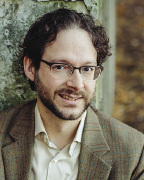Picture yourself in a restaurant dining room: you watch your dining companion's lips move, but you can't hear what he or she is saying over the din of other patrons. Maybe you've been to a library reading room where no one can focus because of all the distracting activity noises. Perhaps worst of all are the countless musical performances that sound small and lifeless, rather than present and enveloping, in an ill-suited performance room.
Experiences like these are what make acoustics a critical aspect of building design. But how can designers make the connection between their drawings of a future space and the aural experience of its future users?
A powerful tool, called auralization, is available to help make this connection. Using computer modeling and signal processing techniques, acoustics consultants can transform architectural drawings into an aural rendering of a space (an "auralization") that allows architects and project owners to hear their space before it is even built.
Any enclosed space is a potential candidate for auralization. A design - architectural drawings or an existing 3D computer model - is all that is needed to generate a realistic, surround-sound aural rendering of the space.
Auralizations can be especially helpful when demonstrating the acoustical effects of a specific design. They can help designers choose finish materials and refine the shaping of their space, and they can identify and communicate potential acoustical problems, such as echoes and poor speech intelligibility. Equally, an auralization can empower the design team to make informed decisions about the cost-effectiveness of various features and can be an invaluable guide during the "value engineering" or cost-cutting phase of a project. Above all, by giving the designers and the project owners an opportunity to experience together the sound of a space still in design, auralization can help to ensure agreement on the course of the design.
Although naturally suited for evaluating music performance spaces, auralization can be used for rooms of any kind - from atriums, libraries, and dining halls to academic lecture rooms, corporate conference rooms, and offices. To produce an auralization, acoustics consultants use a moderately detailed design of the space and accurate acoustical information of the construction materials. Next, they consider typical uses of the space:
* What sounds will occur in the space?
* Where will the sounds originate?
* Where in the space will people hear the sounds?
* Where in the space do you want people to hear the sounds?
By considering these variables, virtual listening scenarios can be created. The auralization itself is presented in a well-equipped, acoustically treated, and calibrated listening room.
As in any other discipline, acoustics consultants apply what they learn from one auralization to the next. They maintain large databases of material properties, which describe the acoustical attributes of different surfaces, and instruct the modeling software how sound interacts with each surface in a space. The software then tracks the sound as it travels from the sound source, through the space, around obstacles, and ultimately to the listener.
It is often difficult for designers to realize the practical effects of design features that acoustical consultants recommend. Auralization demonstrates why a certain design choice is preferred, allowing clients to judge for themselves the appropriate balance between competing considerations, such as cost, schedule, aesthetics, and acoustics.
The goal in the use of auralization is to allow clients to make confident and informed design decisions regarding the acoustics of their space. The cost of using auralization is usually quite reasonable in the context of the project and affordable for most clients, and very often, is a cost-saver for the project. Acoustics can help determine the success or failure of a space on the most concrete of measures: is the space usable? Auralization can make a big difference in the outcome.
Jonah Sacks and Ioana Pieleanu are senior consultants in acoustics at Acentech, Cambridge, Mass.
Tags:
.png)








